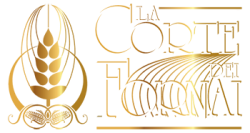Write a slug that incorporates your keyword and identifies your website structure when possible. For example if you’re writing a page that will appear on a blog internal to your website, you could use a URL slug that reflects your site hierarchy. On this page, squarespace.com/blog/on-page-seo indicates that this page lives on the website’s blog and is focused on on-page SEO as a topic. Add any original or stock imagery to your site and review your alt descriptions.
Understanding the fundamentals of SEO is important for online success. This comprehensive guide aims to demystify SEO, providing actionable insights and strategies to boost your website’s ranking and drive organic traffic. Staying up to date with the latest SEO trends is crucial for keeping your website competitive.
- On-page SEO is one of the three main SEO branches, which include technical and off-page SEO.
- When you find keywords you want to target, save them with the “+” button.
- There are many technical SEO factors – site structure, anchor text, URL structure, and so forth.
- And if you want to get the most out of Semrush for your keyword research, we’ve got a detailed article on using Semrush for keyword research.
- The content is big enough for the vast majority of people to read comfortably.
Generative AI And Social Media: Redefining Content Creation
And you can use the “Overview” report to analyze your rankings on a keyword level. It shows a list of all your tracked keywords and their current positions. This allows search engines to find our content easily and improve its indexability. Off-page SEO is crucial for building your website’s authority and establishing trust with search engines. To be successful with Google SEO, you must take a comprehensive approach that addresses key elements essential for search engine ranking. And with its project tools, you can keep an eye on ranking changes, run site audits, and check out what your competitors are up to with their SEO strategies.
Keyword research is a crucial part of SEO that helps businesses understand your audience’s search intent and tailor your content to them. Conducting monthly keyword research to identify quality keywords and update your content with the new keywords helps to stay relevant and keep your content high ranking. Another SEO strategy that SEO experts utilize is optimizing a website’s semantic markup.
Let’s start by understanding what Search engine optimization is all about. They improve user experience, fix issues like slow load times, and help you rank higher on search engines. Technical SEO addresses issues like site speed, mobile responsiveness, and security to improve user experience. Search engines use algorithms to rank sites based on relevance, quality, and performance, requiring SEO strategies to adapt continually. As a result, SEO has changed from optimizing fixed criteria to working toward optimal user experience.
Add high-quality images and videos.
We work with all our clients on social media optimization, which helps deliver traffic from social media SEO Anomaly platforms and increase overall search engine rankings. By positioning content on well-regarded platforms within the industry, we work to establish your website as a trusted source. This approach supports long-term growth and improved search engine performance. Choosing us means partnering with more than just another SEO agency; you’re joining forces with a high-caliber team driven to see your business thrive. SEO is among the most impactful online marketing strategies for generating a high return on investment.
Use Creative Seed Keywords
As you add images to your site, make sure that people and search engines can find and understand them. The snippet is sourced from the actual content of the page the search result is linking to, thus you have complete control over the words that can be used to generate the snippet. Occasionally the snippet may be sourced from the contents of the meta description tag, which is typically a succinct, one- or two-sentence summary of the page. A good meta description is short, unique to one particular page, and includes the most relevant points of the page. Check out our tips for writing good meta descriptions for more inspiration.
Alt text is a short, but descriptive piece of text that explains the relationship between the image and your content. It helps search engines understand what your image is about and the context of how your image relates to your page, so writing good alt text is quite important. You can add this to your HTML with the alt attribute of the img element, or your CMS may have an easy way to specify a description for an image when you’re uploading it to your site. Learn more about how to write good alt text, and how to add it to your images. Link text (also known as anchor text) is the text part of a link that you can see. This text tells users and Google something about the page you’re linking to.
If your website shows up for these searches, you can attract visitors actively looking for what you offer. This matters because higher rankings often lead to more clicks and visits. It provides access to market-leading SEO tools and a wealth of helpful resources, including SEO courses. For example, people who search “best PRODUCT TYPE” are typically looking for product recommendations, reviews, and comparisons to help them decide which specific product to purchase.
